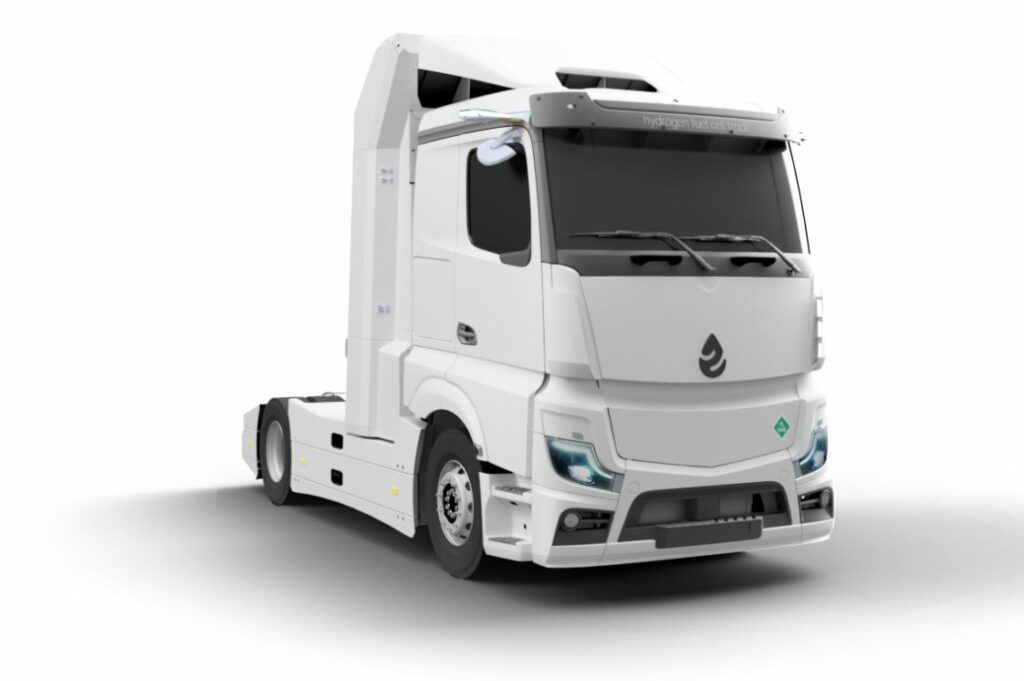At the IAA exhibition in Hannover, Zepp.solutions introduced its latest innovation: the zepp.europa H2 Fuel Cell Truck, a hydrogen-powered vehicle designed to address the growing demand for emission-free heavy transport.
Based on the Mercedes-Benz Actros chassis, this 40-tonne hydrogen-electric truck marks a significant development in sustainable long-distance freight transport. However, how does this latest advancement compare with industry standards, and what are its real-world implications?
The zepp.europa truck boasts a range of over 700 km on a single charge, supported by a hydrogen storage capacity of 58.8 kg at 350 bar. While impressive, these figures place the truck in competition with other hydrogen-powered vehicles on the market, such as Hyundai’s XCIENT Fuel Cell Truck, which offers a similar range but operates at 700 bar—highlighting the industry’s ongoing debate about optimizing storage pressure for range and efficiency.
Additionally, the zepp.europa truck is designed with a sleeper cab and can tow standard 45ft containers without the need for configuration changes, allowing for immediate deployment in existing logistics operations. This practical feature underscores Zepp.solutions’ attempt to ease the transition for companies accustomed to diesel-powered fleets. However, operational costs, including hydrogen refueling infrastructure, remain a challenge, especially compared to more established diesel networks.
Two early customers, Vos Transport Group and Inland Terminals Group, have already invested in the zepp.europa trucks. The commitment of these companies signals confidence in the technology, yet it also raises questions about the risks of early adoption. Hydrogen fuel cell vehicles are still in their nascent phase, and while these trucks offer zero CO2 emissions, the long-term reliability and overall cost-effectiveness of hydrogen fuel cells remain areas of concern.
At the IAA exhibition, the trucks are on display, with Inland Terminals Group’s truck available for viewing at the Zepp.solutions stand, and Vos Transport Group’s truck showcased with a tilted cab to reveal the fuel cell system and hydrogen storage. While these exhibitions provide insight into the technology, the real test will come when the trucks hit the road for daily logistics operations.
The zepp.europa trucks are powered by Zepp.solutions’ X150 hydrogen fuel cell system, a larger variant of the company’s established 50kW system already in use in Rotterdam’s water taxis and at Amsterdam’s Schiphol airport for powering airplanes. While the company has a track record with smaller fuel cell systems, scaling up to meet the power demands of long-haul trucks introduces new challenges in durability and efficiency, especially over extended routes and under varying load conditions.
One of Zepp.solutions’ key selling points is that its trucks offer the same performance and operational flexibility as traditional diesel trucks, without the associated greenhouse gas emissions. However, this claim warrants scrutiny. Although hydrogen fuel cells emit only water vapor, the production of hydrogen—especially if not derived from renewable sources—can still carry a significant carbon footprint. The question remains whether these trucks can truly deliver a net-zero emissions solution when considering the full lifecycle of hydrogen production and distribution.
While the zepp.europa H2 Fuel Cell Truck represents a significant step forward in the transition to emission-free transport, broader industry adoption will depend on the development of hydrogen refueling infrastructure and the cost competitiveness of hydrogen fuel. Governments and industry stakeholders must collaborate to address these barriers if hydrogen-powered trucks are to become a mainstream solution for decarbonizing the heavy transport sector.
